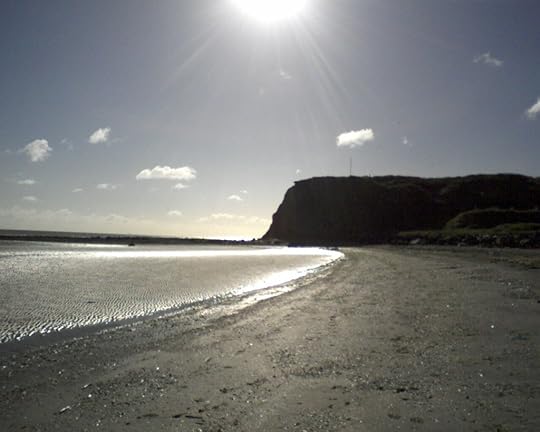Millibars and the Sea Area Forecast
Hello,
This week’s word, thanks to my current writing project (“Words the Weather Gave Us”), is about the word history of millibars, with a little history of my early introduction to weather forecasts thanks to my Dad. I hope you enjoy this early draft extract.
 Sea Area Forecast – fine with good visibility
Sea Area Forecast – fine with good visibilityExtract from “Words the Weather Gave Us” by Grace Tierney, copyright 2022
The first weather term I ever recognised as such was millibar. My dad loved the radio, or wireless as he called it, and it was always playing when he and I ate breakfast together before school and work. If I was running on time I’d catch the sea area forecast.
Many countries provide this service in one form or another but naturally the RTÉ radio forecast was the one I grew up with. Neither of us would leave home and head for a ferry or fishing boat, but there was something magical about the calm voice of the announcer and his litany of sea areas and their pressure status and forecast. Living by the coast the forecast did let us know if we’d need to bring an umbrella.
You can find some extracts from these forecasts online thanks to YouTube, even one dating back to 1939. Listening again brought me back in time. Here’s a text extract from a 2014 one I found online –
“… wind southwest force five or six, weather patchy light rain or drizzle mainly in the north, visibility moderate or poor … Malin head … 1118 rising slowly … the visibility at Tuskar lighthouse is greater than ten miles … Valentia southwest nine knots fair seven miles 1026 rising slowly”.
It moves around all the points of our coast, checking the wind speed, temperature, conditions, pressure, outlook, visibility. The locations gained near mythic status in my mind and at one stage I would have been able to recite the various sea areas in order much better than I could ever recall lines of “Macbeth” for my exams. The version I found online didn’t include the word millibar but the earlier ones I adored definitely gave the units of pressure as millibars – for example “1023 millibars, falling slowly”. They never seemed to rise or fall quickly.
The reason millibar wasn’t in the 2014 forecast was because on the 1st of January 1986, with a quick pen stroke, the millibar died and was replaced with the hectopascal (hPa for short), the new internationally recognised unit. Fortunately they are numerically equivalent so 1032 hPa is the same as 1032 millibars. Of course the pascal in all this is with thanks to Blaise Pascal (1623- 1662) the French mathematician, inventor, writer, and physicist who, amongst his many other works, experimented with barometers.
The sequence of the forecast was – Malin Head, Fair Head, Belfast Lough, Strangford Lough, Carlingford Lough, Howth Head, Wicklow Head, Carnsore Point, Hook Head, Dungarvan, Roches Point, Mizen Head, Valentia, Loop Head, Slyne Head, Erris Head, Rossan Point, Bloody Foreland. As a keen coastal and lighthouse lover I’ve visited most of these classic Irish headlands in the years since but at the time the only one I knew was Howth Head. They could have been lands of fantasy and fable for all I knew, but I knew what weather they would encounter that day. Job done, we departed for our day.
A millibar is a unit of barometric pressure which joined English in the early 1900s. The word is formed by joining milli (thousand) and bar (unit of pressure). The milli part comes from Latin mille (thousand). The bar part was coined in 1903 from Greek baros (weight) because it’s all about the weight of the air above a given point on the earth’s surface from ground level to the upper atmosphere. All very scientific but the history of this word can’t catch the memory of the Irish sea area forecast with my dad. 1018 millibars falling slowly.
{end of extract}
Until next time, happy reading, writing, and wordfooling,
Grace (@Wordfoolery)
p.s. It’s day 21 of the 30 days NaNoWriMo 2022 writing challenge and I’m on 39,535 words.
p.p.s. “Modern Words with Old Roots”, a digital exclusive Wordfoolery mini-book will be out very soon. Watch this space!
p.p.p.s. My intention is to remain on Twitter but if you’re worried about missing my word history chatter, your best bet is to subscribe to this blog. There’s a Sign Me Up button at the top of the sidebar if you’re on a laptop, or tap the Follow button at the bottom of your phone screen. A monthly email newsletter is in the works too.



